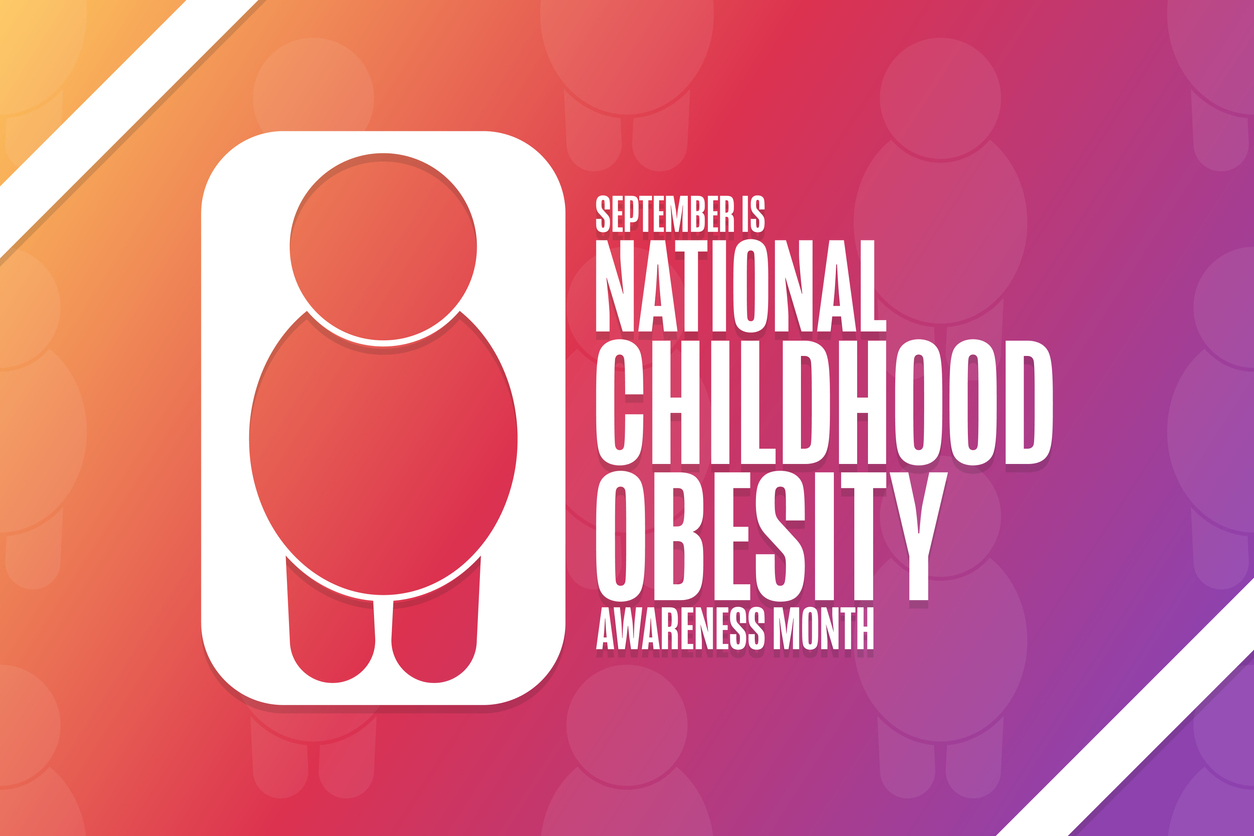Tag: Screen Time
Play an Active Role to Prevent Childhood Obesity
August 30, 2022

National Childhood Obesity Awareness Month, observed in September, is dedicated to educating children and their families on how to prevent childhood obesity. Parents, teachers, and caregivers of young children are continuously challenged to find ways to prevent childhood obesity.
Obesity is defined as a body mass index (BMI) at or above the 95th percentile by the Centers for Disease Prevention and Control (CDC) sex-specific BMI-for-age growth charts. Childhood obesity is a serious problem in the United States where one in five children and adolescents are affected. Some groups of children are more impacted than others, but all children are at risk of gaining weight that is higher than what is considered healthy.
Obesity is a complex disease with many contributing factors including genetics, eating patterns, physical activity levels, and sleep routines. Societal and community factors also matter— childcare and school environments, neighborhood design, access to health, affordable foods and beverages, and connections to safe and convenient places for physical activity affect the ability of children to make healthy choices.
Strategies to Prevent Obesity
As a parent or a caregiver, you can help prevent obesity at home; healthcare systems can help families prevent and manage childhood obesity, and communities can use strategies to support a healthy, active lifestyle for all.
Compared to children with healthy weight, children who are overweight or obese are at a higher risk for asthma, sleep apnea, bone and joint problems, type 2 diabetes, and heart disease.
There are many ways parents and caregivers can help children have a healthy weight and set up lifelong healthy habits at home.
Healthy Eating Patterns
Adopting healthy eating patterns as a family helps children reach and maintain a healthy weight as they age. Eating a variety of vegetables and fruits, whole grains, lean protein foods, and low-fat and fat-free dairy products and following nutrition guidelines sets your family up for optimal health.
Help your children get the nutrients they need by making half their plate fruits and vegetables. Help kids rethink their drinks by replacing sugary drinks, such as soda, fruit drinks, and flavored milk, with water, 100 percent juice, or plain low-fat milk.
Movement Solutions
Physically active youth have stronger muscles and bones, better cardiovascular fitness, and lower body fat than those who are inactive.
Help your children move more and meet the Physical Activity Guidelines for Americans by making it a family affair. Walking the family pet before and after school, riding bikes, and having races in the yard all count toward physical activity. Active chores, such as washing the car, vacuuming a room, or raking leaves, also engage children in worthwhile physical activities.
Consistent Sleep Routines
Good sleep helps prevent type 2 diabetes, obesity, injuries, poor mental health, and problems with attention and behavior. Kids who don’t get enough sleep are at risk for unhealthy weight gain. Researchers are still trying to learn how sleep is linked to weight gain. Some reasons might include causing a child to eat more or to be less physically active because of a lack of energy.
CDC provides guidelines for the number of hours needed to sleep by age group. Preschoolers need 11–13 hours of sleep per day, including naps. Children 6–12 years old need 9–12 hours of uninterrupted sleep a night, and youth 13–18 need 8–10 hours. Sticking to a consistent sleep schedule, including on weekends, can help children sleep better.
Screen Time vs. Family Time
In young people, too much screen time can lead to poor sleep, weight gain, lower grades in school, and poor mental health. Reducing screen time can free up time for family activities and can remove tendencies to eat unhealthy food.
Turning screens off an hour before bed and removing electronic devices from children’s bedrooms can help reduce screen time and improve sleep. The American Academy of Pediatrics recommends creating a family media plan with examples of how to reduce screen time.
Healthcare Providers’ Recommendations
Talk to your child’s healthcare provider if you’re concerned about potential health risks associated with excess weight. Children with obesity are more likely to have type 2 diabetes, risk factors for heart disease such as high blood pressure and high cholesterol, muscle and joint problems, and fatty liver disease. Schedule annual physical checkups to routinely check on these medical conditions and to measure a child’s weight and height and plot them on growth charts to calculate BMI and assess patterns.
InsureYouKnow.org
At insureyouknow.org, keep a record of your child’s health insurance coverage, results from their annual wellness check-up, and follow-up recommendations to keep your child as healthy and happy as possible.
